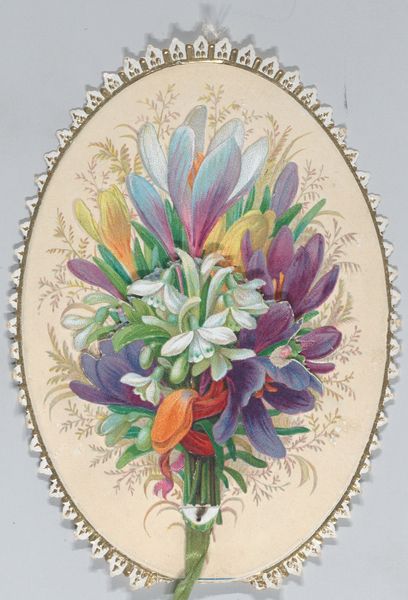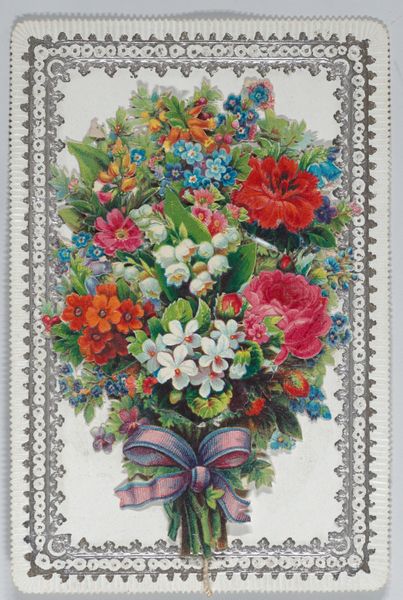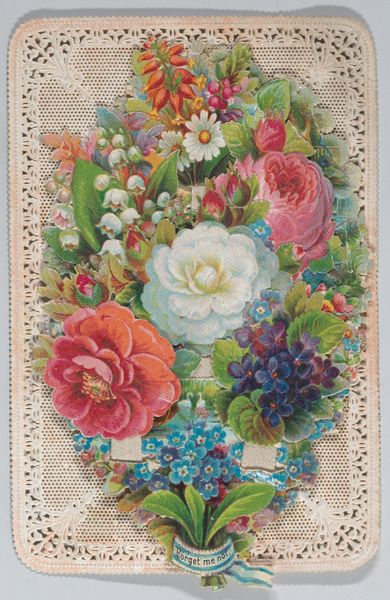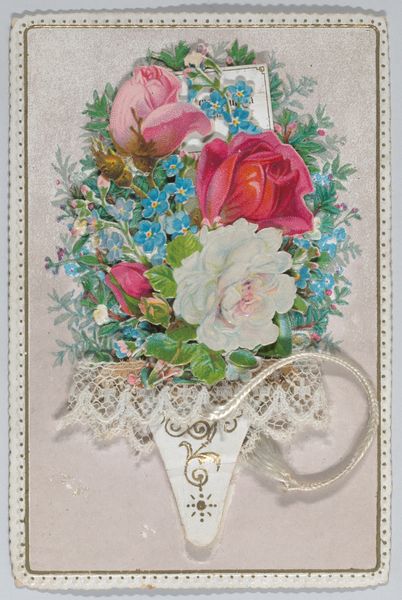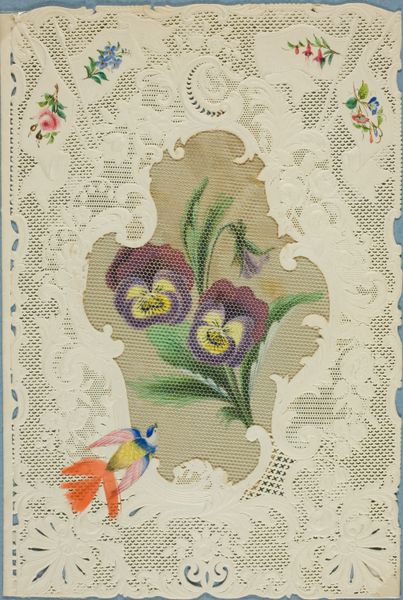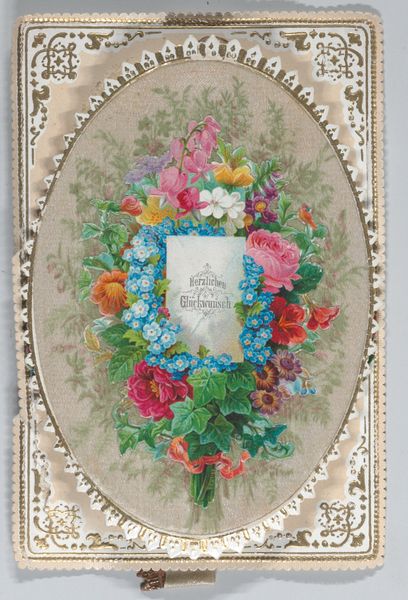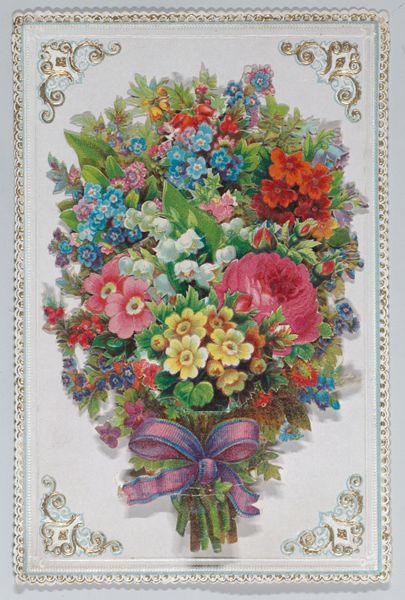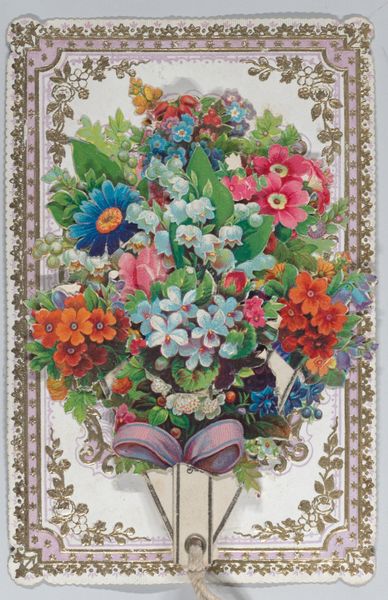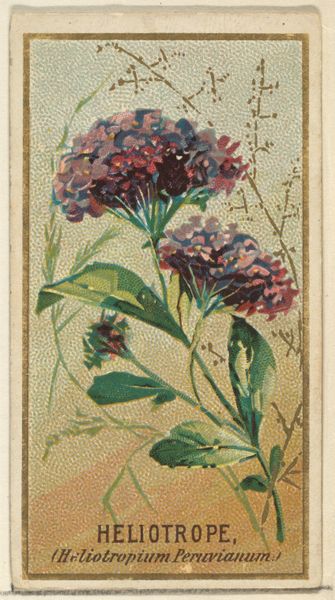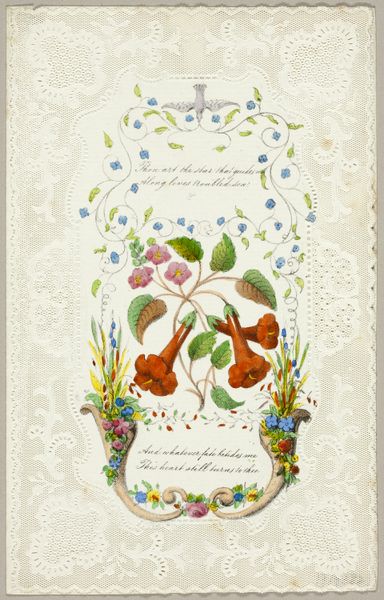
Dimensions: Width: 5 7/8 in. (15 cm) Length: 7 3/8 in. (18.7 cm)
Copyright: Public Domain
Curator: This lovely drawing and print is titled "Valentine," made around 1876 by an anonymous artist. It’s currently held in the collection of the Metropolitan Museum of Art. What are your first impressions? Editor: It's delicately beautiful—makes me think of whispers and secret affections. The color palette is wonderfully soft, that muted purple against the creamy backdrop really sings. It feels like holding a memory in your hands. Curator: It’s interesting you say that. The Romanticism style employed is deliberate. Valentine's were sentimental objects often exchanged privately as tokens of affection. Considering this artwork’s placement within the decorative arts tradition is vital too. How does the geometric pattern and the organic arrangement of the flowers intersect for you? Editor: Ooh, good question! The contrast is striking. The rigid structure of the lace border kind of contains the wild abandon of the floral arrangement. Almost like trying to control emotions—or, maybe, suggesting that even the most free-flowing feelings eventually find some form. Curator: That resonates. The quotation from Shakespeare reinforces this idea. Placing notions of beauty and truth within this artistic construct emphasizes love as both genuine emotion and stylized presentation. Does the anonymity of the artist alter your perspective? Editor: Absolutely. It gives this piece a universal quality, like it could belong to anyone, speak to anyone. A collective feeling materialized, a message from one unknown admirer to another. It reminds me of finding a love letter tucked away in an antique shop; intimate and anonymous all at once. Curator: It reflects the time as well. The constraints faced by female artists especially may have necessitated remaining anonymous to gain an audience in that time. Editor: It's so cool how art from centuries past can still touch us. The artist achieved something special. I feel oddly comforted. Curator: Precisely. It is the quiet radicalism of feeling expressed in an age where those feelings were perhaps too easily suppressed. Editor: So true. Curator: Agreed. Thank you!
Comments
No comments
Be the first to comment and join the conversation on the ultimate creative platform.
